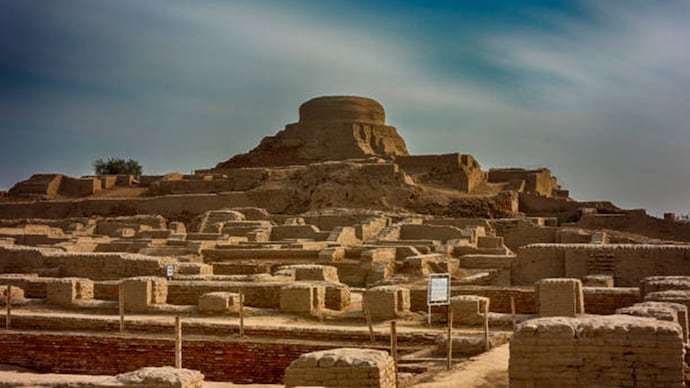Indus valley people spoke ancient Dravidian language, claims new research
An independent researcher analysed the archaeological, linguistic, and historical evidence to suggest the possibility of the ancient civilisation speaking the ancestral Dravidian language.

The Indus Valley Civilisation, the earliest known urban culture of the Indian subcontinent, has always been a source of intrigue and a source to look back into the past. A new observation sheds light on the language of this ancient civilisation, which could have its roots in ancestral Dravidian languages.
Bahata Ansumali Mukhopadhyay, an independent researcher, analysed numerous archaeological, linguistic, and historical evidence to find that the words used for elephant — piri’, ‘piru — in Bronze Age Mesopotamia were originally borrowed from — ‘pilu’ — a Proto-Dravidian word for elephant, which was prevalent in the Indus Valley Civilisation.
The research published under Humanities and Social Sciences Communications in Nature group journal indicates the possibility of Proto-Dravidian speakers migrating from Indus valley to South India. The research claims that the ancestral forms of the Dravidian languages currently spoken in South India were once dominant linguistic groups in the ancient civilisation.
Languages in the Indus Valley Civilisation
Since the ancient world was generally more multilinguistic, researchers believe that the ancient Indus Valley Civilisation too hosted more languages than today. Several scholars have worked on tracing the linguistic base of the expansive civilisation that extends over almost one million square kilometres of Pakistan, Afghanistan, and the North-Western part of India.

Today these regions speak Indo-Aryan languages that includes Punjabi in Punjab with dialects Siraiki and Lahnda; Sindhi in Sindh, Hindi, Marwari, Gujarati in eastern parts of Greater Indus Valley; Dardic including Shina, Khowar, Kohistani; Iranian that has Baluchi, Dari, Pashto, and Wakhi in western parts of Greater Indus Valley; Nuristani in northeastern Afghanistan; Dravidian; Brahui spoken in Baluchistan and Sindh; and Burushaski, a language spoken in northernmost Pakistan close to the Chinese border.
An elephant shows the path
Mukhopadhyay, a software developer by profession, analysed the Akkadian word, ‘piru’ that was used to refer to an elephant in Mesopotamia (2000-1600 BC) and p®ru that refers to ivory in Hurrian language from the Old Persian inscriptions of Darius.
She claims that the word ‘piru' comes from the Indian word ‘pilu’, which was adopted by the ancient Iranian tongues, who used ‘l’s as ‘r’s. Talking to IndiaToday.in she explained that pilu, is a Proto-Dravidian elephant-word, which was prevalent in the Indus valley civilization. She argues that there is sufficient evidence of an ancient Dravidian word pi/pl, which means splitting/crushing and was related to meaning ‘tooth/tusk’ of an elephant.
She also says that ‘pilu’ is among the most ancient and common names for a toothbrush derived from plants. Salvadora persica is a characteristic plant found in the Indus valley, whose roots and twigs have been widely used as toothbrushes. Her study claims that this phytonym ‘pilu’ had also originated from the same Proto-Dravidian tooth word. And since these names were widely used across Indus Valley Civilisation regions, a significant population of the civilisation must have used that Proto-Dravidian tooth-word in their daily communication.
The word pilu’, ‘palla’, ‘pallava’, ‘piuvam have also been found in Dravidian dictionaries related to the Proto-Dravidian tooth word “pal”. The paper argues that the ‘pilu’-based words, which were used to convey the meanings of ivory, elephant and toothbrush tree in IVC, had originated from the Proto-Dravidian tooth-word which can be reconstructed as ‘pal’/‘pil’.
The Indus Valley Civilisation
The Bengaluru-based independent researcher has been on a quest to decipher the mysteries of the Indus Valley Civilisation and had in past deciphered inscriptions of the ancient civilisation indicating that seals and tablets were formalised data-carriers that used both document-specific and linguistic syntaxes to convey messages.
The archaeological site was first discovered in 1921 at Harappa in the Punjab region and then in 1922 at Mohenjodaro, near the Indus River in the Sindh (Sind) region, both in present-day Pakistan. The Indian region of the civilisation extends in Punjab's Ropar at the foot of the Shimla Hills.
